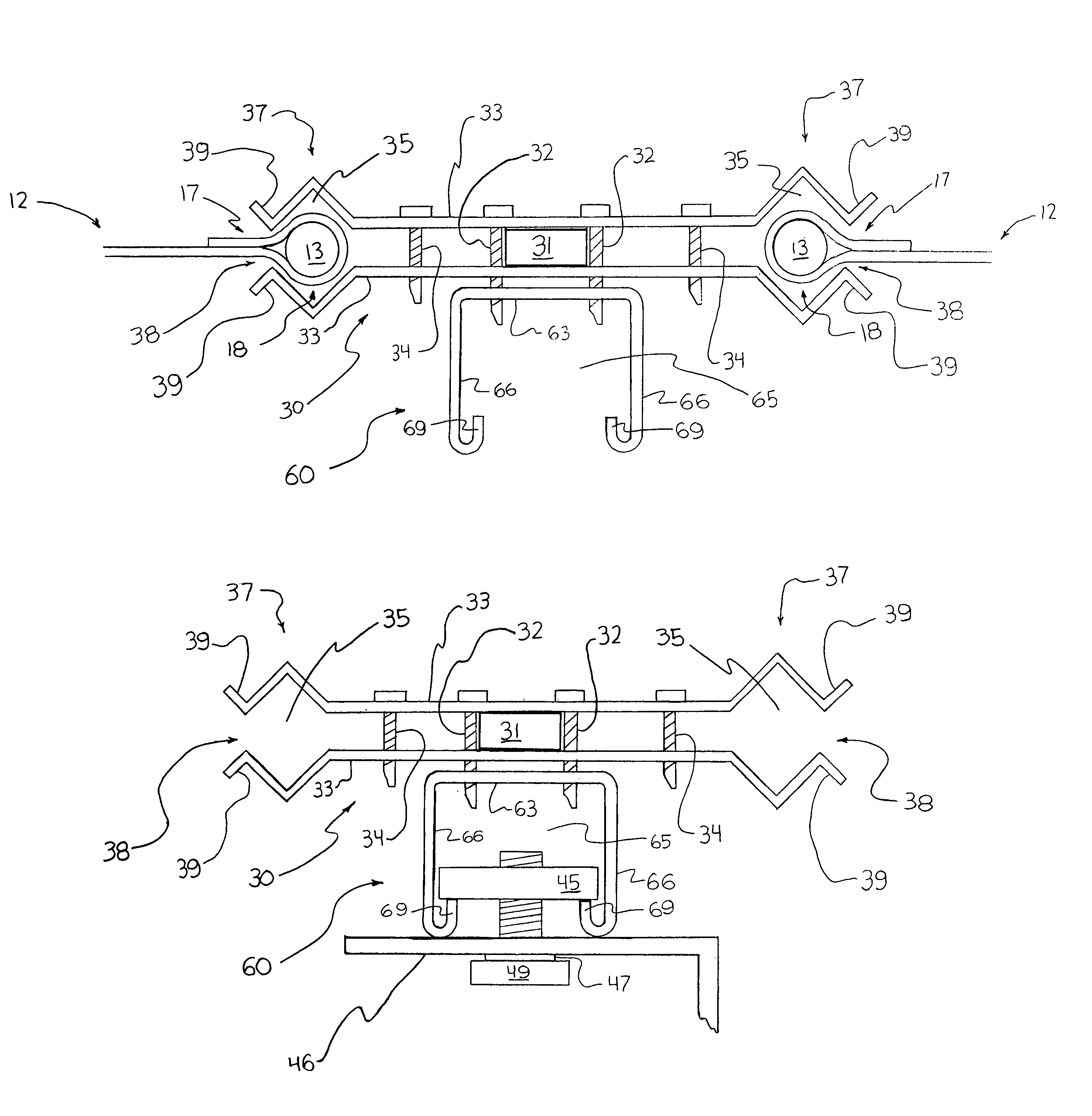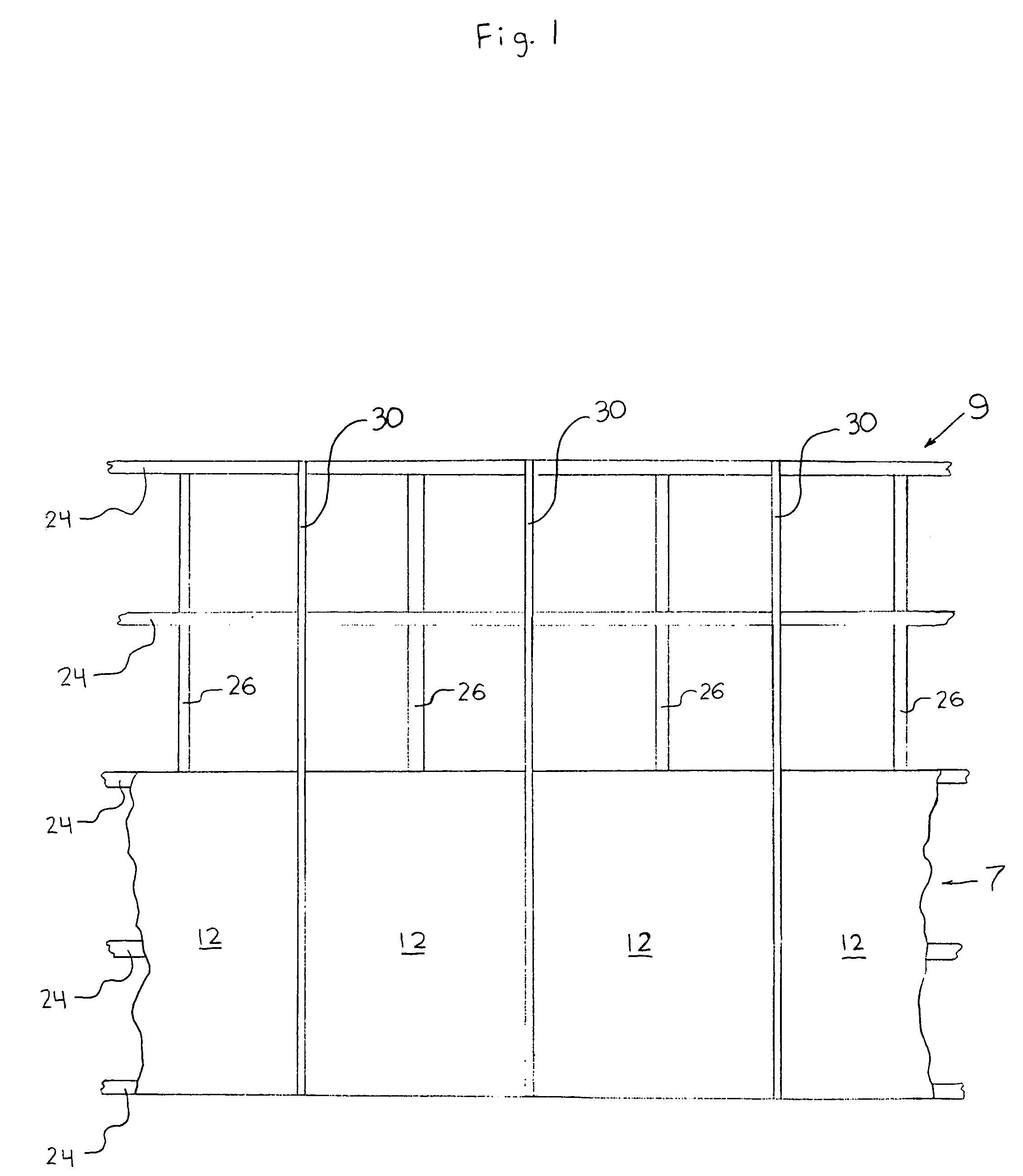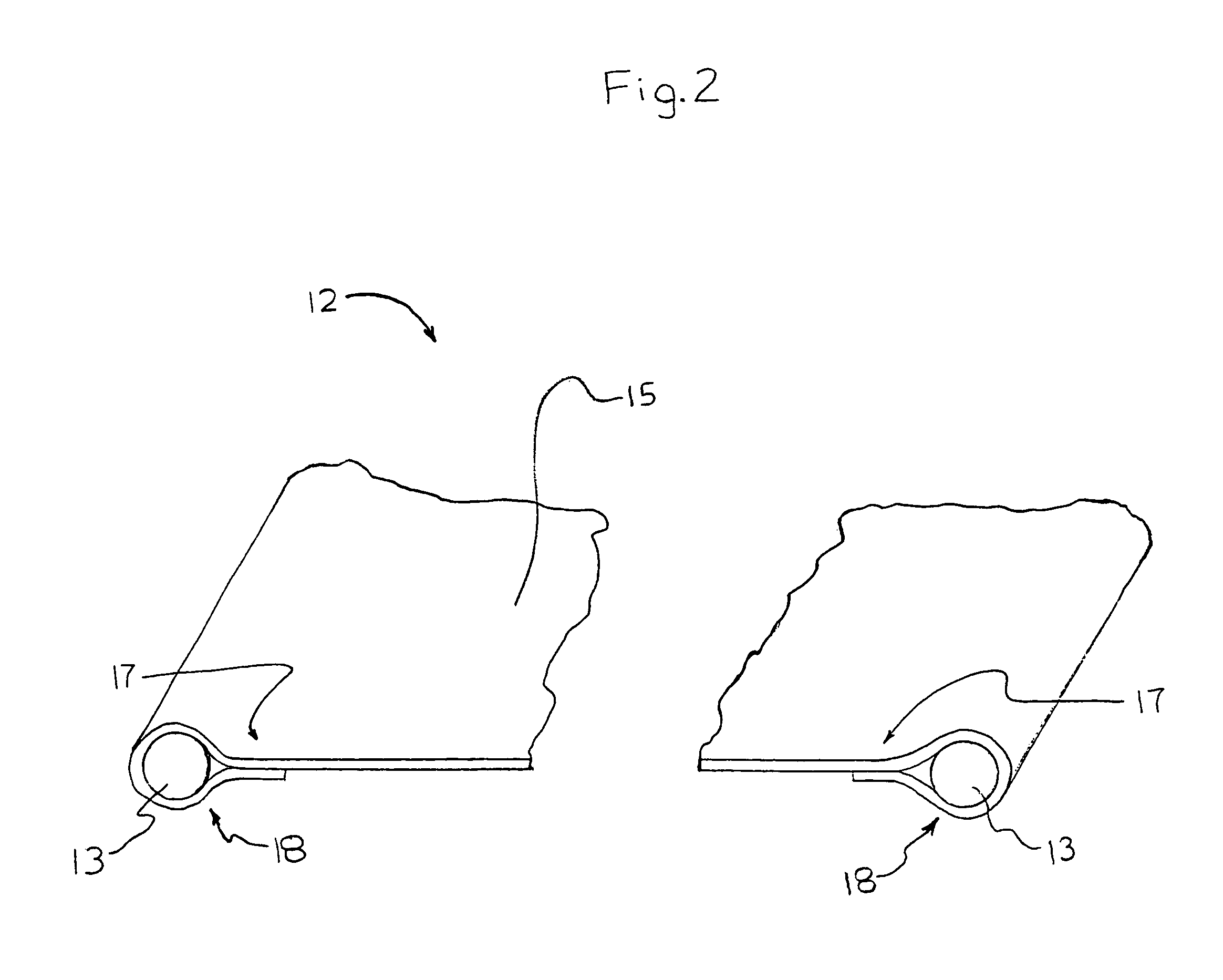Construction enclosure system
- Summary
- Abstract
- Description
- Claims
- Application Information
AI Technical Summary
Benefits of technology
Problems solved by technology
Method used
Image
Examples
Embodiment Construction
[0025]FIG. 1 shows one embodiment of a construction enclosure system in accordance with the present invention. The illustrated construction enclosure system 7 generally includes a plurality of enclosure panels 12, a plurality of brackets 40 (not shown), a plurality of frame members 30, and a plurality of reinforcement members 60 (not shown). In FIG. 1, the frame members 30 have been configured in a vertical orientation adjacent an outer face of a building 9. It can be particularly advantageous to configure the frame members 30 in a generally vertical orientation, as this facilitates moving the enclosure panels 12 from one level of the building 9 to the next. For example, in a preferred embodiment, each enclosure panel is slidably retained between an adjacent pair of frame members 30 that extend vertically from the lowermost level of a building to the uppermost level. Such embodiments allow the enclosure panels to be moved up and down the building to enclose one or more desired level...
PUM
 Login to View More
Login to View More Abstract
Description
Claims
Application Information
 Login to View More
Login to View More - R&D
- Intellectual Property
- Life Sciences
- Materials
- Tech Scout
- Unparalleled Data Quality
- Higher Quality Content
- 60% Fewer Hallucinations
Browse by: Latest US Patents, China's latest patents, Technical Efficacy Thesaurus, Application Domain, Technology Topic, Popular Technical Reports.
© 2025 PatSnap. All rights reserved.Legal|Privacy policy|Modern Slavery Act Transparency Statement|Sitemap|About US| Contact US: help@patsnap.com



